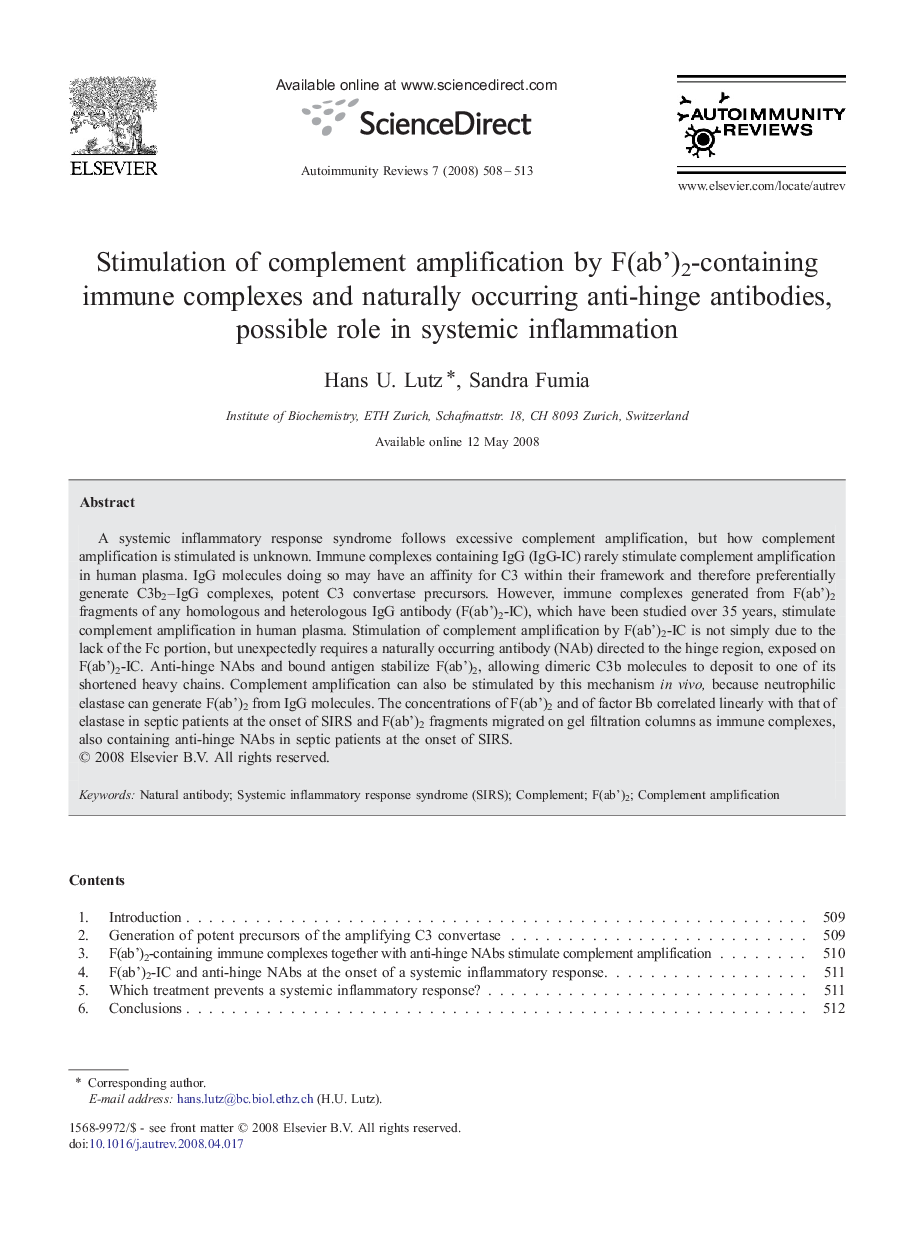| Article ID | Journal | Published Year | Pages | File Type |
|---|---|---|---|---|
| 3342515 | Autoimmunity Reviews | 2008 | 6 Pages |
A systemic inflammatory response syndrome follows excessive complement amplification, but how complement amplification is stimulated is unknown. Immune complexes containing IgG (IgG-IC) rarely stimulate complement amplification in human plasma. IgG molecules doing so may have an affinity for C3 within their framework and therefore preferentially generate C3b2–IgG complexes, potent C3 convertase precursors. However, immune complexes generated from F(ab’)2 fragments of any homologous and heterologous IgG antibody (F(ab’)2-IC), which have been studied over 35 years, stimulate complement amplification in human plasma. Stimulation of complement amplification by F(ab’)2-IC is not simply due to the lack of the Fc portion, but unexpectedly requires a naturally occurring antibody (NAb) directed to the hinge region, exposed on F(ab’)2-IC. Anti-hinge NAbs and bound antigen stabilize F(ab’)2, allowing dimeric C3b molecules to deposit to one of its shortened heavy chains. Complement amplification can also be stimulated by this mechanism in vivo, because neutrophilic elastase can generate F(ab’)2 from IgG molecules. The concentrations of F(ab’)2 and of factor Bb correlated linearly with that of elastase in septic patients at the onset of SIRS and F(ab’)2 fragments migrated on gel filtration columns as immune complexes, also containing anti-hinge NAbs in septic patients at the onset of SIRS.
